The Art of Science—Versailles at the Science Museum, London
Have you ever wondered how it would feel to witness the grandeur and opulence of the 18th-century French court? Then you might want to go to London.
Edoardo Cesarino 19 December 2024
20 December 2021 min Read
Until Sunday, January 30th, 2022, the Georgia Museum of Art is exhibiting some of the most influential Native American printmakers at work today. Collective Impressions: Modern Native American Printmakers is a fascinating insight into the cultural impact Native American people can have on contemporary American society.
Printmaking has a rich history across the globe. Most simply, it is the use of template blocks or printing plates coated with ink, pressed onto paper to make pictures. These pictures can be repeated one by one. First discovered in China around 255 BCE, it offers the opportunity to work communally, to experiment cheaply, and to quickly produce politicized social commentary. Just look to its use in Soviet propaganda posters.
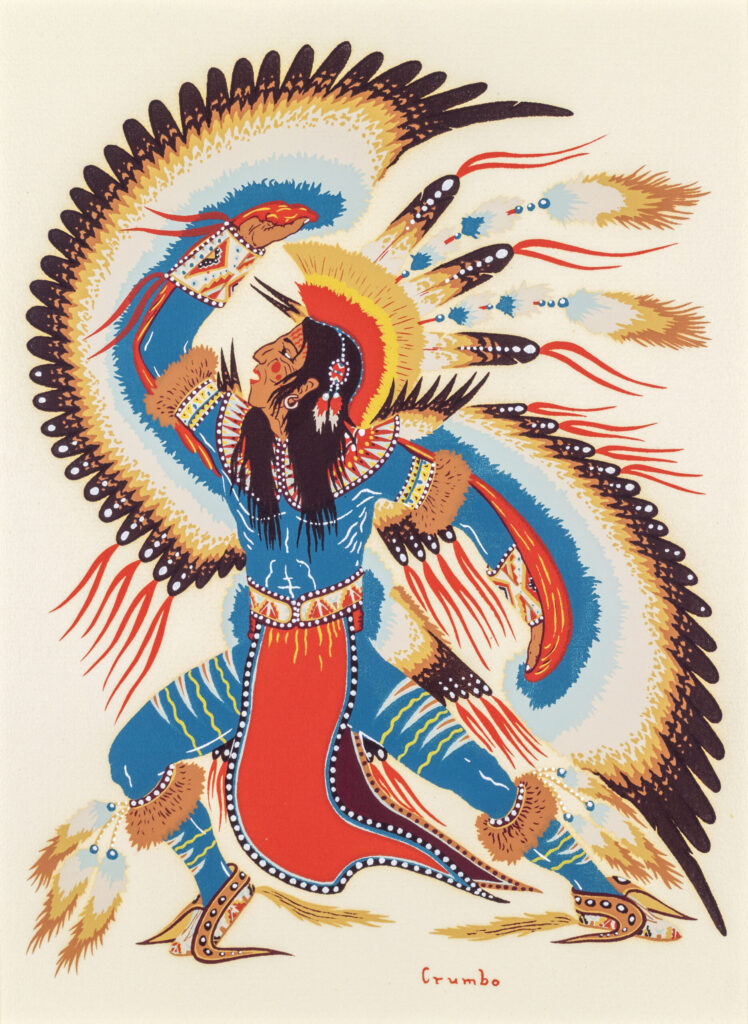
Woody Crumbo, Eagle Dancer, 1963, Georgia Museum of Art, Athens, GA, USA.
This exhibition examines the individuals, communities, and institutions central to elevating printmaking as a medium among Native American artists during the second half of the 20th century. Printmaking is not a traditional art form among Indigenous artists, but they have exploded its practice and meaning, making this exhibition an absolute must-see, whether in person or online. The online catalogue shows all of the works in brilliant detail.
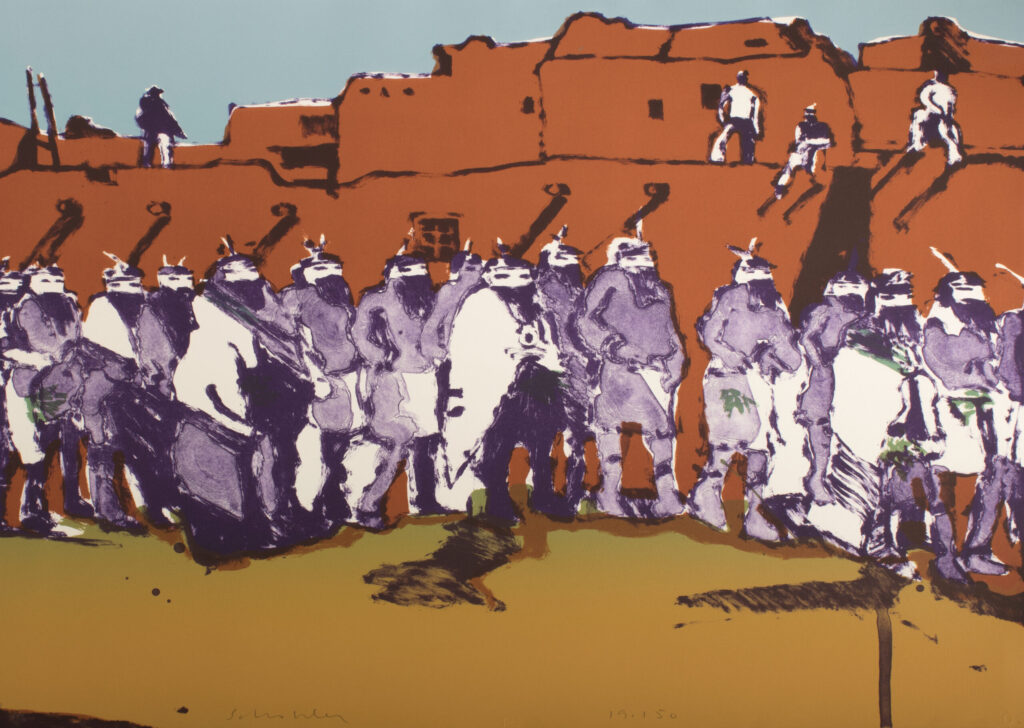
Fritz Scholder, Dancers at Zuni, 1978, Fred Jones Jr Museum of Art, University of Oklahoma, Norman, OK, USA.
Earlier this year we wrote about Native American appropriation of white settler tools to comment on the horror of colonial oppression. The Lakota Ledger artists used lined accounting books, a symbol of the invasive culture, to experiment with new art materials and transition to a completely new form (an example is shown below). This exhibition pursues a similar theme, looking at modern paper based artists using the tools of the oppressor to create their own narrative.
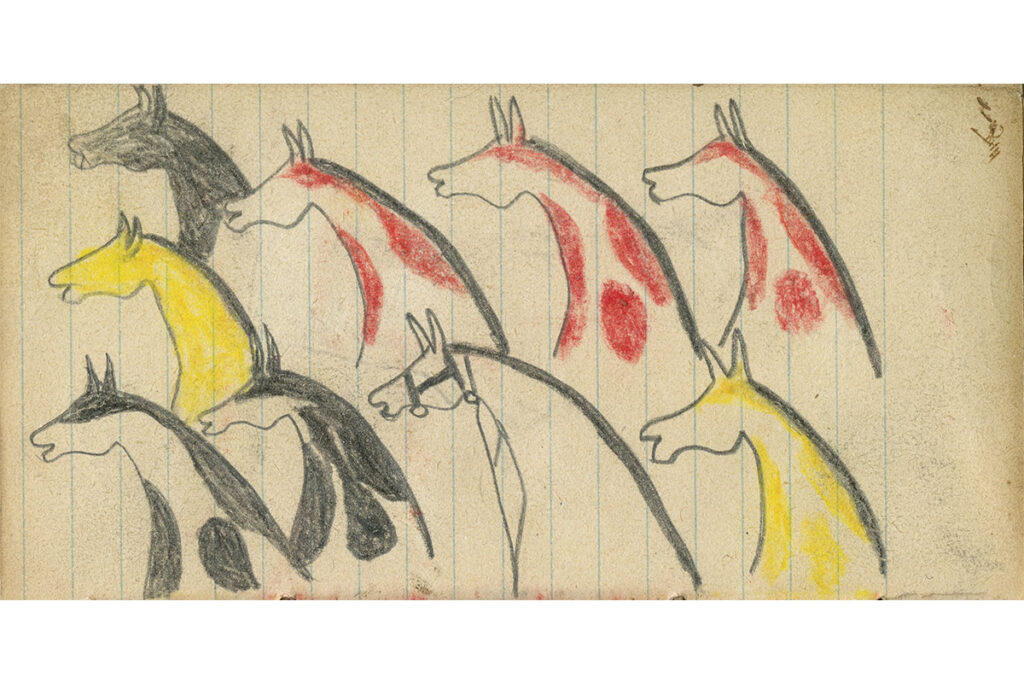
Goodwyn Ledger Book, Lakota Wood Mountain, Saskatchewan, ca. 1880, Donald Ellis Gallery, New York, NY, USA.
Printmaking is particularly suited to Native American principles of reciprocity and communal activity. Often a collaborative endeavor, it also involves the passing on of skills from master printer to the wider arts community. As the curators point out, this exhibition places Indigenous artists, writers, and scholars firmly within the museum’s mission to preserve, exhibit, interpret, and collect the history of American art. Because of course Native American art is American art.
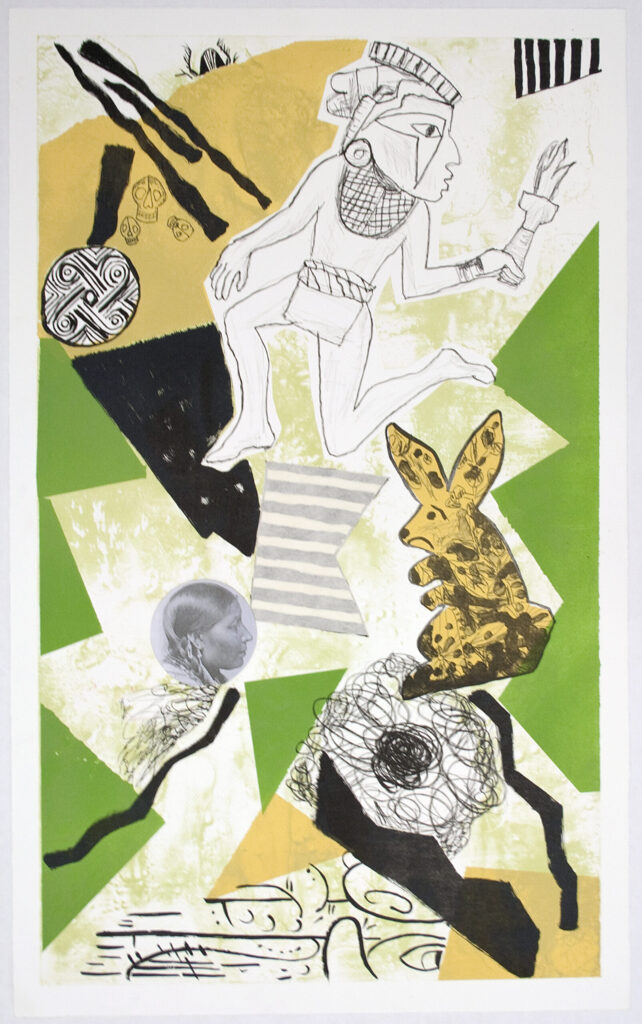
Jaune Quick-to-See Smith, Earth People, 2011, Georgia Museum of Art, Athens, GA, USA.
The Georgia Museum of Art stands within the University of Georgia – land which was originally ancestral Native American tribal land. It is interesting to see that the University has placed this fact front and center. The very first page of the exhibition catalogue has a land acknowledgment statement, openly offering a space for accountability and change:
At the Georgia Museum of Art, we recognize our role as settlers and guests in Northeast Georgia. The University of Georgia and surrounding region is the ancestral homeland of Muskogean-speaking peoples and Cherokee groups, as well as many other Indigenous caretakers. They were the original stewards of this land and water since time immemorial and continue to retain their ancestral connection to the land of Georgia. We value the enduring influence of the vibrant, diverse, and contemporary cultures of Indigenous peoples. We are conscious of the role in colonization that museums have played. We choose to hold ourselves accountable to appropriate conversation, representation, connection, and education to facilitate a space of measurable change.
Museum Catalogue, Collective Impressions, 2021, Georgia Museum of Art, Athens, GA, USA.
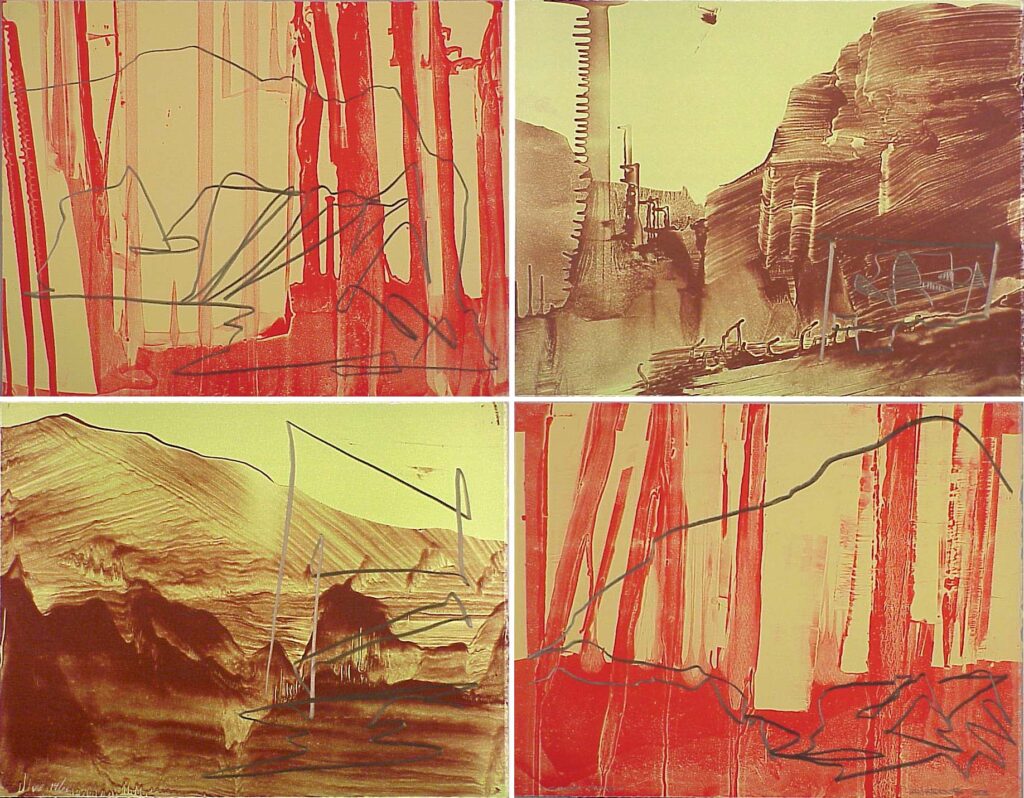
James Lavadour, Ghost Camp, 2002, Crow’s Shadow Institute of the Arts, Pendleton, OR, USA.
James Lavadour, whose Ghost Camp print is shown above, is one of the founders of the Crow’s Shadow Institute of Arts. Many of the artists in this show have studied at Crow’s Shadow, which provides a creative conduit for educational, social, and economic opportunities for Native Americans. They are a world-class studio, focusing on printmaking, working with both emerging and established artists.
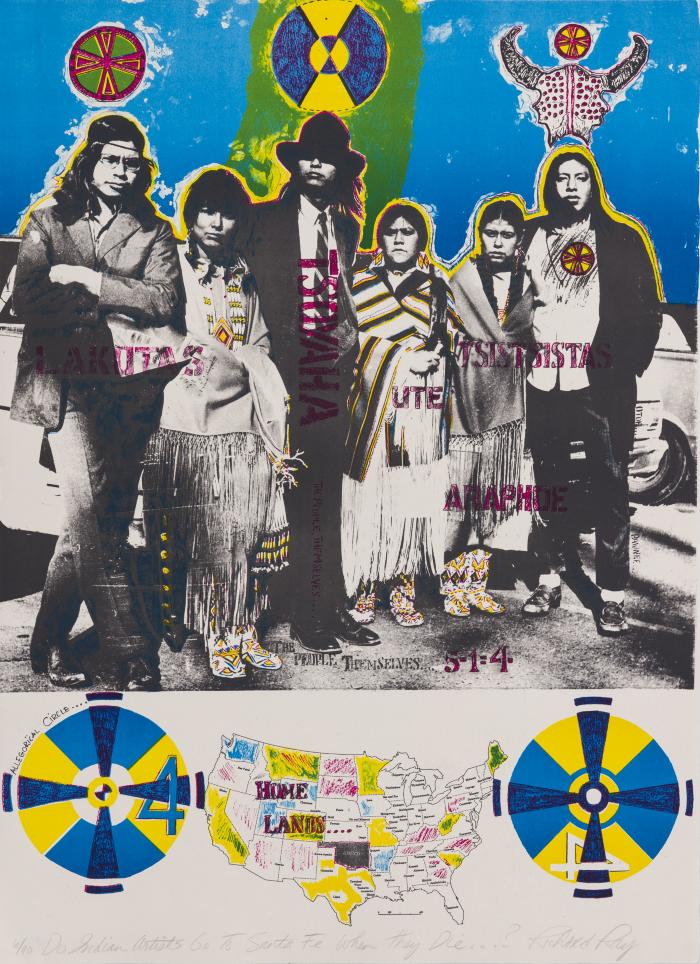
Richard Ray Whitman, Do Indian Artists Go To Santa Fe When They Die….?, Fred Jones Jr Museum of Art, University of Oklahoma, Norman, OK, USA.
Collective Impressions features an influential group of Indigenous artists, from some of the earliest to engage with the medium, like Awa Tsireh and Gerald Nailor, to a group of more humorous and satirical artists, like Fritz Scholder, T.C. Cannon, and Jaune Quick-to-See Smith. The exhibition also highlights a large number of Cherokee, Muscogee (Creek) and Yuchi artists, including Bobby C. Martin, Yakita Starr Fields, America Meredith, Kay WalkingStick, and Richard Ray Whitman, whose works address history, memory, and belonging. Each artist has their own distinct style and message. Many challenge common stereotypes, assumptions, and misconceptions about Native American culture and history.
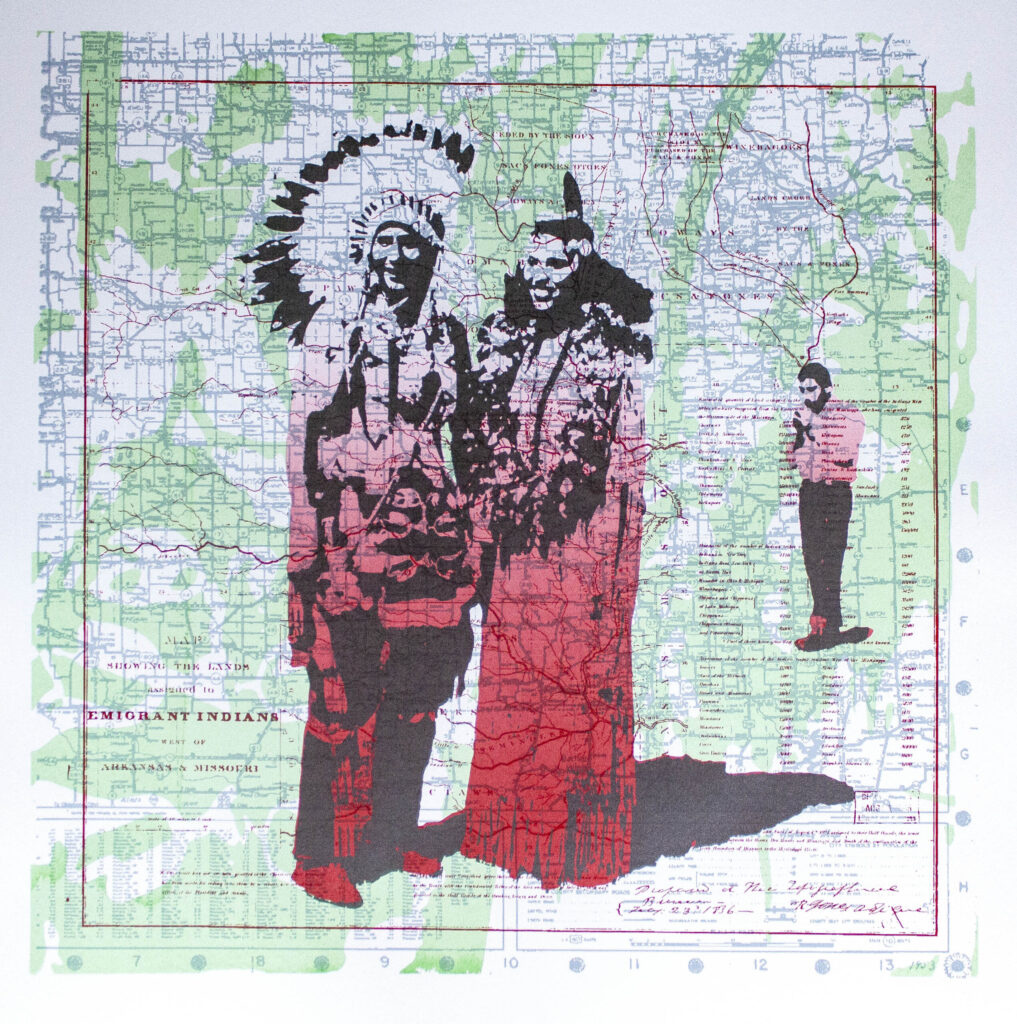
Bobby C Martin, Emigrant Indians No 1, 2018, collection of the artist, Georgia Museum of Art, Athens, GA, USA.
Native American artists found in print-making a medium for important artistic experimentation, as an art form that lends itself to new avant garde methods and modernist techniques. However, it also was a pathway to social commentary for a lot of these artists who were looking to share an important message through the wider circulation that multiples, like prints, can offer.
Interview with Lois Reitzes for City Lights programme on radio WABE, 1 Nov 2021.
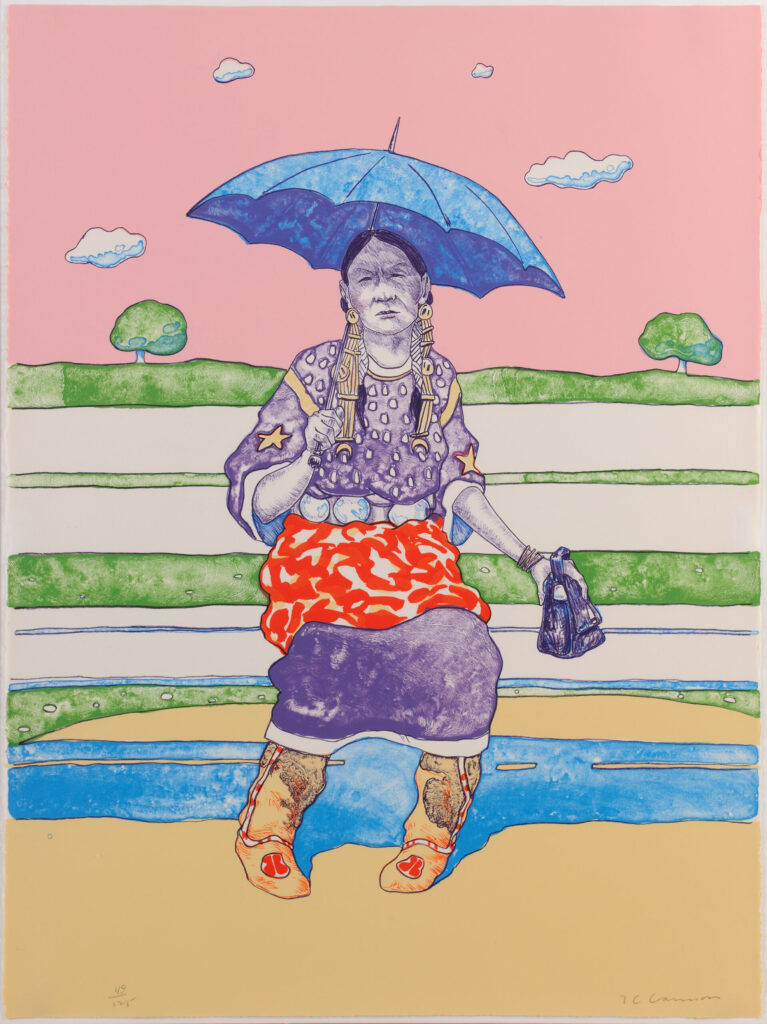
T. C. Cannon, Waiting for the Bus (Anadarko Princess), 1977, Fred Jones Jr Museum of Art, University of Oklahoma, Norman, OK, USA.
This exhibition is a brilliant overview of influential Indigenous artists active during the second half of the 20th century. A time when genocide was (and is) occurring across the globe, targeting Indigenous cultures and peoples. Native Americans have experienced hundreds of years of dispossession, massacre, and enslavement. In this exhibition we get to see a culture and a history made more visible. Such rich and diverse voices deserve to be heard.
DailyArt Magazine needs your support. Every contribution, however big or small, is very valuable for our future. Thanks to it, we will be able to sustain and grow the Magazine. Thank you for your help!